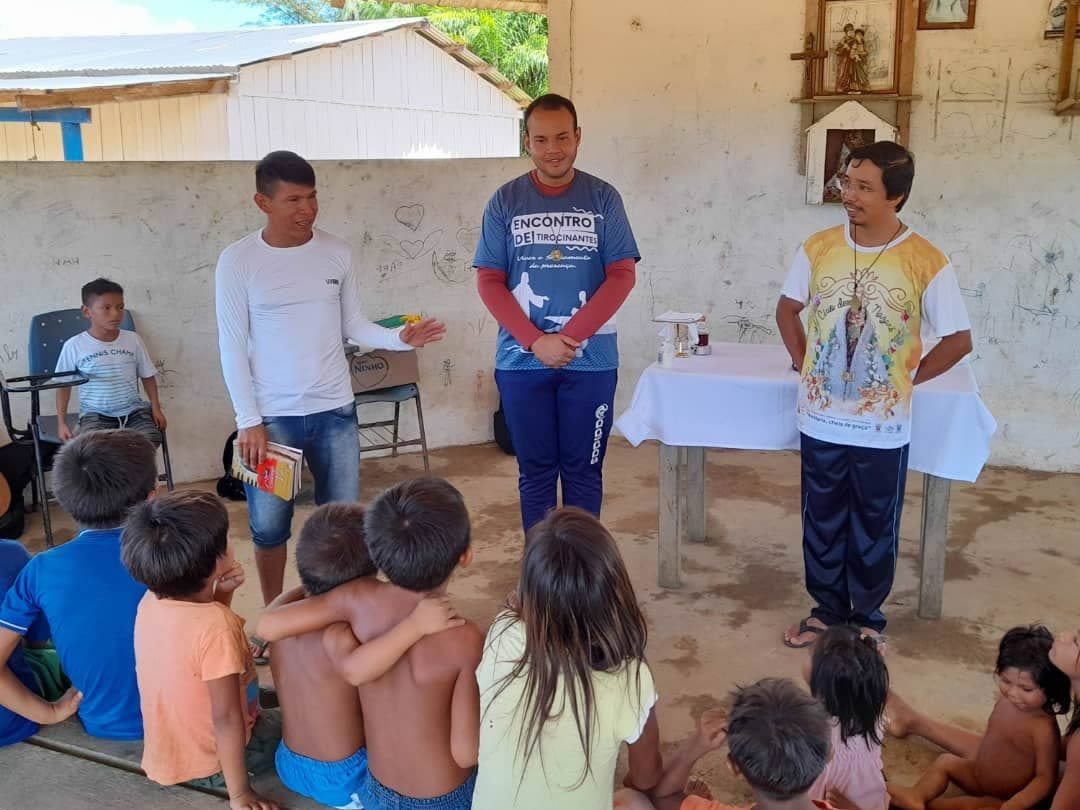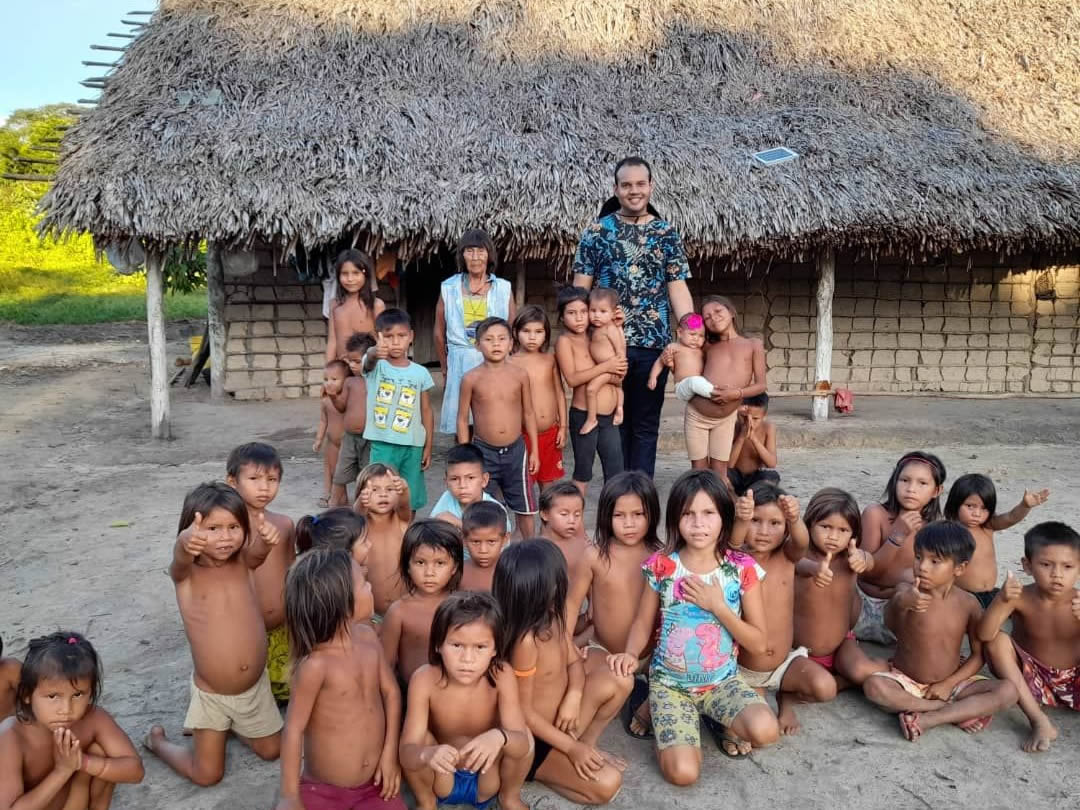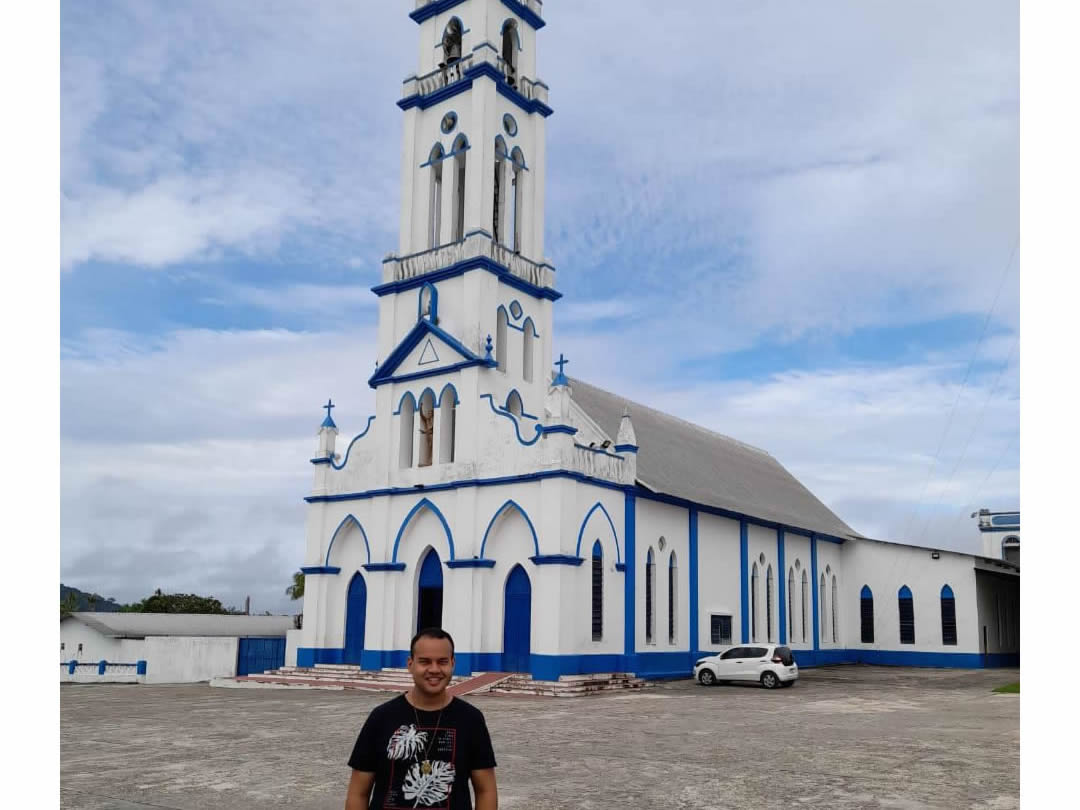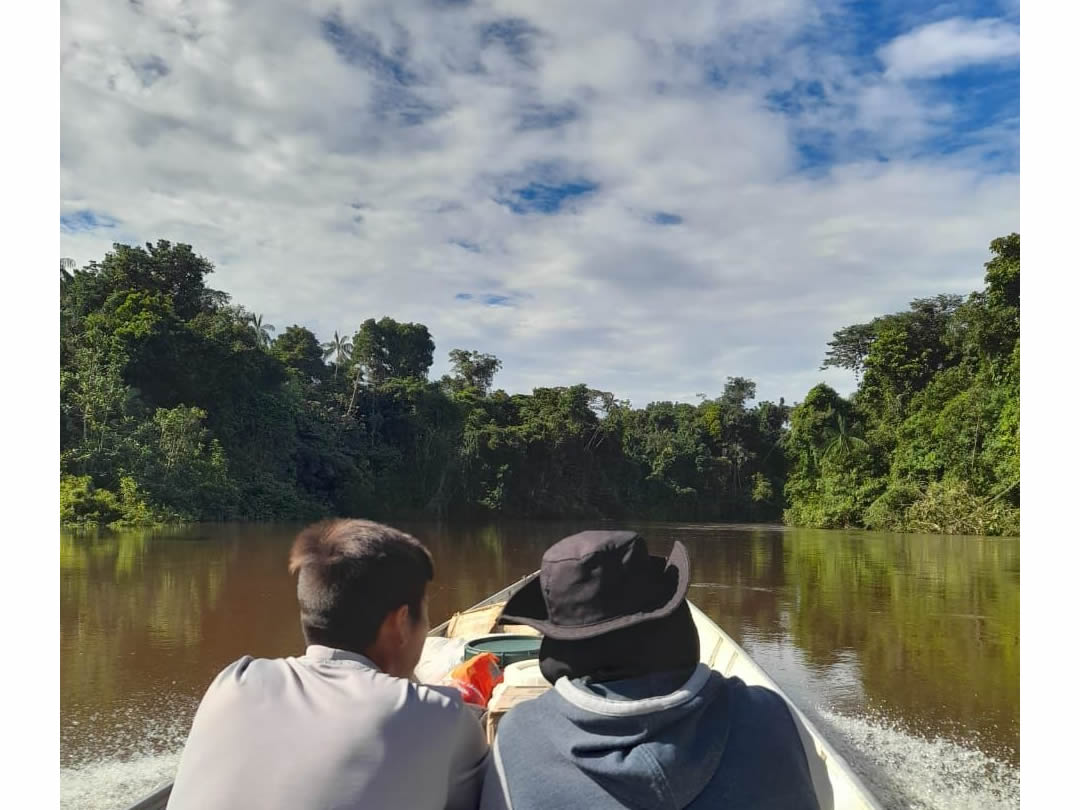Being lovable is a human quality that is cultivated, accepting the effort that it so often entails. For Don Bosco it was not an end in itself, but a way to lead souls to God.
An address given at the 42nd Salesian Spirituality Days in Valdocco, Turin.
All good things in this world began with a dream (Willy Wonka).
Don’t give up yours (Willy Wonka’s mother).
A sculptor was busily working with his hammer and chisel on a large block of marble. A little boy, who was walking around licking ice cream, stopped in front of the wide-open workshop door.
The little boy stared in fascination at the shower of white dust, of small and large stone chips falling left and right.
He had no idea what was happening; the man who was pounding the large stone like a madman seemed a little strange to him.
A few weeks later, the little boy walked past the studio and to his surprise saw a large and mighty lion in the place where the marble block used to be.
All excited, the boy ran to the sculptor and said to him: “Sir, tell me, how you knew there was a lion in the stone?”
Don Bosco’s dream is God’s chisel.
Our Lady’s simple and unique advice in the dream at nine years of age, “Make yourself humble, strong and energetic” became the scaffolding for a unique and fascinating personality. And above all a “style” that we can define as “Salesian”.
Everyone loved Don Bosco. Why? He was attractive, a born leader, a real human magnet. Throughout his life he would always be a “conqueror” of affectionate friends.
John Giacomelli, who remained his friend for life, recalls, “I entered the seminary a month after the others. I knew almost no one, and in the early days I seemed to be lost in my loneliness. It was the cleric Bosco who came up to me the first time he saw me alone, after lunch, and kept me company all the time at recreation, telling me various nice things to distract me from any thoughts I might have of home or relatives left behind. Discussing with him, I learned that he had been quite ill during the holidays. He was then very kind to me. Among other things, I remember that since I had a much over-sized cap, which several of my companions made fun of me for, and which displeased me and Bosco, who often came with me, fixed it for me himself, since he had the necessary material with him and was very good at sewing. From then on I began to admire the goodness of his heart. His company was edifying.
Can we borrow some of his qualities to become “lovable” too?
1) Being a positive force
Someone who constantly maintains a positive attitude helps us see the bright side and pushes us forward.
“When Don Bosco first visited the miserable shed which was to be used for his oratory, he had to be careful not to bump his head, because on one side it was only a metre high; for a floor it had the bare ground, and when it rained the water penetrated from all sides. Don Bosco felt big rats running between his feet, and bats fluttering overhead.” But for Don Bosco it was the most beautiful place in the world. And he set off at a run: “I ran right back to my boys. I gathered them around me and began to shout in a loud voice, ‘Great news, my sons, we’ve got a place for our Oratory, a more reliable one than we’ve had till now. We’ll have a church, a sacristy, classrooms and a place to play. Sunday, next Sunday, we’ll go to our new Oratory which is over there in Pinardi’s house. And I pointed the place out to them.”.
Joy
Joy, a positive and happy state of mind, was the norm in Don Bosco’s life.
More true than ever for him is the expression “My vocation is something else. My vocation is to be happy when others are happy.”
Where love is concerned there is no adult, just children, this childlike spirit that is abandonment, carefreeness, inner freedom.
“ Don Bosco [thus] covered the whole playground, and he was always considered a good player to have, although it entailed a great deal of exertion and sacrifice on his part. ‘It was heartwarming just to see him in our midst’, said one of the pupils, now already at an advanced age. ‘Some of us had no coats or they were in bad shape; others had trousers that were more rags than anything else; others, too, had no hat or their shoes were so worn that the toes stuck out. We were a disheveled and, occasionally, quite grubby, ill-mannered, importunate and capricious lot, but he was happy to be with the poorest of us. With the smaller boys he was as gentle as a mother. If two of them started calling each other names and broke into a
fight, Don Bosco would quickly run up to them and tell them to behave. But the two boys, blind with anger, would pay him no attention. He would then raise his hand as if to strike them, but would suddenly check himself and just separate them. Soon peace would be restored as if by magic.
He often divided the boys into two teams for a game, leading one himself. Both sides played so hard that players and spectators got very excited. One team wanted the honor of beating Don Bosco and his team, while the other was sure of undisputed victory.
Often he would mark a finish line and challenge all the boys to a race with, of course, a prize for the victor. After they were all lined up, Don Bosco would hitch his cassock to his knees. “Ready?” he would cry. “Get set! Go!” And the race was on, as a swarm of boys raised a cloud of dust and trailed Don Bosco. He always won. The last of these contests took place in 1868, when Don Bosco, in spite of his swollen legs, still ran so swiftly that he left eight hundred boys behind him, including some top racers. We were there ourselves and could hardly believe our own eyes. (BM III (English edition), 85).
2) Sincerely caring for others
One of the characteristics of “attractive” people is genuine and sincere care and concern for others. It is not just a matter of asking someone how their day went and listening to their answer. It is about really listening, empathising and showing genuine interest in the lives of others. Don Bosco wept with a broken heart at the death of Fr Calosso, of Luigi Comollo, at the sight of the first boys behind prison bars.
An anticlerical young man
We make mention of this young man because he can represent a hundred and one others of his kind. In the autumn of 1860 Don Bosco went into the coffee shop known as the Consolata, because it was near the famous Shrine of that name, and took a seat in a secluded room to quietly read the correspondence he used to bring with him. A casual and courteous waiter served the patrons there. His name was Giovanni Paolo Cotella, a native of Cavour (Turin), aged 13. He had run away from home in the summer of that year, because he was intolerant of his parents’ reproaches and severity. We leave the description of his meeting with Don Bosco, as he narrated it to Fr Francesco Cerruti.
“One evening”, he recounted, the boss said “Bring a cup of coffee to a priest who is in the room over there.” “Me bring coffee to a priest?” I said as if startled. Priests were then as unpopular as they are now, even more so than now. I had heard and read all kinds of things and had therefore formed a very bad opinion of priests.
I went over ready to mock him: “What do you want from me, priest?” I asked Don Bosco rudely. And he looked at me steadily, “I would like a cup of coffee from you, my good young man” he replied with great kindness, “but on one condition.” “What’s that?” “That you bring it to me yourself.”
Those words and that look won me over and I said to myself “This is not a priest like the others.”
I brought him his coffee; some mysterious force kept me close to him, and he began to question me, still in the most loving way, about where I was born, my age, my work and above all why I had run away from home. Then he said “Do you want to come with me?” “Where?” “To Don Bosco’s Oratory. This place and this kind of work are not for you.” “And when I am there?” “If you like, you can study.” “But will you look after me properly?” “Oh, just think about it! You can play have fun, be happy there.” “Well, well” I replied, “I’’l come. But when? Immediately? Tomorrow?” “This evening” Don Bosco said.
I handed in my resignation to my boss who would have liked me to stay a few more days, and I took my few rags and went to the Oratory that same evening. On the morrow Don Bosco wrote to my parents to reassure them about me, and inviting them to come to him for a necessary understanding regarding help with food and related expenses. In fact my mother came and, after listening to what she said about the family’s circumstances, Don Bosco concluded by saying “Well, let’s do this; you pay 12 lire a month, Don Bosco will find the rest.”
I admired not only the exquisite charity, Don Bosco showed in this but his prudence. My family was not rich, but they enjoyed sufficient wealth. If, therefore, he had accepted me completely free of charge, it would not have been a good decision, for this would have been detrimental to others more needy than me.”
For two years his parents had kept their agreement with Don Bosco regarding the boarding fee, but at the beginning of the third year they stopped paying and no longer wanted to hear of it. The youngster, though extremely lively, was open, frank, good-hearted, of exemplary conduct, and benefited much from his studies. Now in this school year (1862–1863), as he was about to enter fourth class, and afraid of having to cut short his studies, he opened up to Don Bosco, who replied: “And what does it matter if your parents no longer want to pay? Aren’t I here? Rest assured that Don Bosco will not abandon you.” And indeed, as long as he stayed at the Oratory, Don Bosco provided him with everything he needed.
When he had finished his fourth year of secondary school and had passed his exams successfully, he began work; and the first money he was able to put together with his work, he sent to Don Bosco at some cost to himself and in small instalments to make up the balance of the small fee that his parents had neglected to pay in his last year at the Oratory. He lived as a good Christian, he zealously disseminated the Catholic Readings, was among the first to join the past pupils union and always kept in affectionate communication with his former superiors.
3) Being a good listener
In a world where everyone seems to be talking all the time, a good listener stands out. Listening to what someone says is one thing, but really listening – absorbing and understanding – is something else. Being a good listener is not just about remaining silent while the other person speaks. It is about participating in the conversation, asking probing questions and showing genuine interest.
Contact as an exchange of energy
He had one of the rarest qualities: the “grace of existence”. A life overflowing, like good wine from the vat. For which thousands of people said “Thank you for being there!” and “I am someone else when I am with you!”
“He listened to the boys with the greatest attention as if the things they were saying were all very important. Sometimes he would get up, or walk with them around the room. When the conversation was over, he would accompany them to the threshold, open the door himself, and bid them farewell by saying: “We will always be friends, right?” (Memorie Biografiche VI, 439).
4) The beauty of the good man
This is why Don Bosco is attractive. Cardinal John Cagliero reported the following fact noted personally when accompanying Don Bosco. After a conference held in Nice, Don Bosco had just finished a sermon and was leaving the sanctuary to walk to the door, his passage blocked by people crowding about
him. A dangerous-looking man stood stock-still, staring at him as though deliberating a violent move. Somewhat concerned, Father Cagliero kept an eye on him as Don Bosco slowly drew nearer to him. Finally they stood face to face. On seeing him, Don Bosco asked, “What do you want?”
“I? Nothing!”
“You look as though you have something to tell me.”
“No, not at all!”
“Would you perhaps like to make your confession?”
“I? How silly!”
“Why are you here then?”
“Because . . . well, because I cannot walk away …. ”
“I understand. Friends, leave us alone for a while” Don Bosco said to those about him. When they pulled back, Don Bosco whispered briefly into the man’s ear. He fell to his knees and made his confession then and there in the middle of the church.” (cf. BM XIV, 22).
Pope Pius XI, the Pontiff who canonised Don Bosco and who had been Don Bosco’s guest at the Pinardi House in the autumn of 1883, remembers, “Here he was answering everyone: and he had the right word for everything, so right that it was amazing: at first surprising then so amazing.”
Two things make us understand eternity: love and wonder. Don Bosco summed them up in his person. Outward beauty is the visible component of inner beauty. And it manifests itself through the light that shines from the eyes of each individual. It does not matter if they are badly dressed or does not conform to our canons of elegance, or if they do not try to impose thesmevles on the attention of the people around them. The eyes are the mirror of the soul and, to some extent, reveal what seems hidden.
But, in addition to their ability to shine, they possess another quality: they act as a mirror both for the gifts held within the soul and for the men and women who are the object of their gaze.
Indeed, they reflect who is looking at them. Like any mirror, the eyes return the innermost reflection of the face before them.
An elderly priest, a former pupil at Valdocco, wrote in 1889, “Don Bosco’s most striking trait was his glance – kindly, yet penetrating the heart’s inmost recesses; a glance which charmed, frightened, or crushed, as the case might be. In my life I never saw the like of it. Generally his portraits, even his photographs, do not bring this out; they simply make him a good-natured man. (BM VI, 2).
Another former pupil, from the 1870s, Pons Pietro, reveals in his recollections: “Don Bosco had two eyes that pierced and penetrated the mind…. He used to walk around talking and looking at everyone with two eyes that turned every which way, electrifying hearts with joy” (MB XVII, 863).
You know you are a good person when people always come to you for advice and encouragement. Don Bosco’s door was always open for young and old. The beauty of the good man is a difficult quality to define, but when it is there, you notice it: like perfume. We all know what the scent of roses is, but no one can stand up and explain it.
Sometimes this phenomenon happened, that a young man heard Don Bosco’s word and could not tear himself away from his side, absorbed almost in a luminous idea… Others kept vigil at his door at night, tapping lightly every so often, until it was opened for them, because they did not want to go to sleep with sin in their souls.
(continued)




















